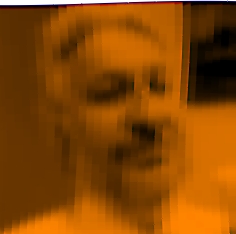General Discussion
Forum home - Go back to General discussion
|
'Mystery' Early 30s Sparton Radio from New Zealand
|
|
|
« Back ·
1 ·
Next »
|
|
|
Return to top of page · Post #: 1 · Written at 9:48:39 PM on 25 September 2016.
|
|

|
Location: Sydney, NSW
Member since 16 January 2008 Member #: 219 Postcount: 66 |
|
Does anybody here know much about Sparton radios? |
|
|
Return to top of page · Post #: 2 · Written at 10:53:44 PM on 25 September 2016.
|
|
|
|
Location: Sydney, NSW
Member since 28 January 2011 Member #: 823 Postcount: 6761 |
|
Might be worth contacting http://www.nzvrs.pl.net/ |
|
|
Return to top of page · Post #: 3 · Written at 8:59:32 AM on 26 September 2016.
|
|
|
|
Location: Melbourne, VIC
Member since 20 September 2011 Member #: 1009 Postcount: 1208 |
|
Radiomuseum has 4 Canadian Sparton models: 467A, 467B, 467C & 468, all with the same valve line-up as the subject of this thread. All have short-wave & all have the very unusual I.F. of 345 kHz. |
|
|
Return to top of page · Post #: 4 · Written at 11:20:39 AM on 26 September 2016.
|
|
|
|
Location: Melbourne, VIC
Member since 20 September 2011 Member #: 1009 Postcount: 1208 |
|
The U.S. Sparton model 67 was sold in NZ: |
|
|
Return to top of page · Post #: 5 · Written at 1:31:09 PM on 26 September 2016.
|
|

|
Location: Sydney, NSW
Member since 16 January 2008 Member #: 219 Postcount: 66 |
|
Well, by looking at the various links I've discovered it's probably a Sparton 616X or 666X (Both have the same circuit) |
|
|
Return to top of page · Post #: 6 · Written at 2:29:02 PM on 26 September 2016.
|
|
|
|
Location: Sydney, NSW
Member since 28 January 2011 Member #: 823 Postcount: 6761 |
|
I'm not usually partial to wooden radios but that 616M Tombstone pictured is a fine looking set. |
|
|
Return to top of page · Post #: 7 · Written at 3:39:22 PM on 26 September 2016.
|
|

|
Location: Sydney, NSW
Member since 16 January 2008 Member #: 219 Postcount: 66 |
|
Watch what you say about wooden cabinets |
|
|
Return to top of page · Post #: 8 · Written at 8:34:55 PM on 26 September 2016.
|
|
|
|
Administrator
Location: Naremburn, NSW
Member since 15 November 2005 Member #: 1 Postcount: 7395 |
|
Ahhhh, the days when the Vintage Radio column was more than a product showcase. I also like a good timber set and am looking at my Raycophone Peewee for some inspiration. ‾‾‾‾‾‾‾‾‾‾‾‾‾‾‾‾‾‾‾‾‾‾‾‾‾‾‾‾‾‾‾‾‾‾‾‾‾‾‾‾‾‾‾‾‾‾‾‾‾‾‾‾‾‾‾‾‾‾‾‾‾‾‾‾‾‾‾‾ A valve a day keeps the transistor away... |
|
|
Return to top of page · Post #: 9 · Written at 9:55:35 PM on 26 September 2016.
|
|
|
|
Location: Sydney, NSW
Member since 28 January 2011 Member #: 823 Postcount: 6761 |
|
Ahhhh, the days when the Vintage Radio column was more than a product showcase. |
|
|
Return to top of page · Post #: 10 · Written at 5:18:13 PM on 28 September 2016.
|
|
|
|
Location: Melbourne, VIC
Member since 20 September 2011 Member #: 1009 Postcount: 1208 |
|
Is the dial on the Sparton anything like this? |
|
|
Return to top of page · Post #: 11 · Written at 8:53:22 PM on 28 September 2016.
|
|

|
Location: Sydney, NSW
Member since 16 January 2008 Member #: 219 Postcount: 66 |
|
MonochromeTV: Is the dial on the Sparton anything like this? |
|
|
« Back ·
1 ·
Next »
|
|
|
You need to be a member to post comments on this forum.
|
|

Sign In

Vintage Radio and Television is proudly brought to you by an era where things were built with pride and made to last.
DISCLAIMER: Valve radios and televisions contain voltages that can deliver lethal shocks. You should not attempt to work on a valve radio or other electrical appliances unless you know exactly what you are doing and have gained some experience with electronics and working around high voltages. The owner, administrators and staff of Vintage Radio & Television will accept no liability for any damage, injury or loss of life that comes as a result of your use or mis-use of information on this website. Please read our Safety Warning before using this website.
WARNING: Under no circumstances should you ever apply power to a vintage radio, television or other electrical appliance you have acquired without first having it checked and serviced by an experienced person. Also, at no time should any appliance be connected to an electricity supply if the power cord is damaged. If in doubt, do not apply power.
Shintara - Keepin' It Real · VileSilencer - Maintain The Rage


